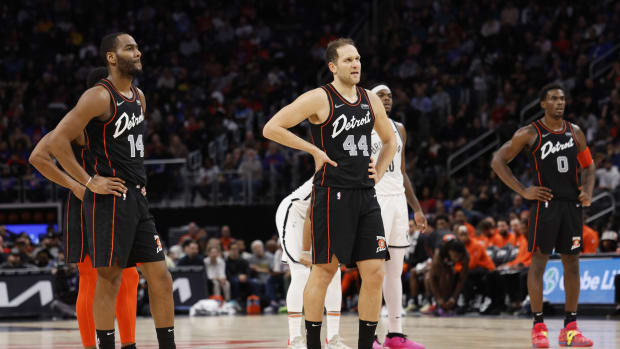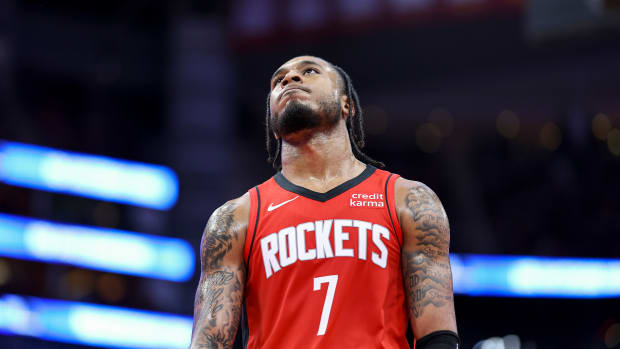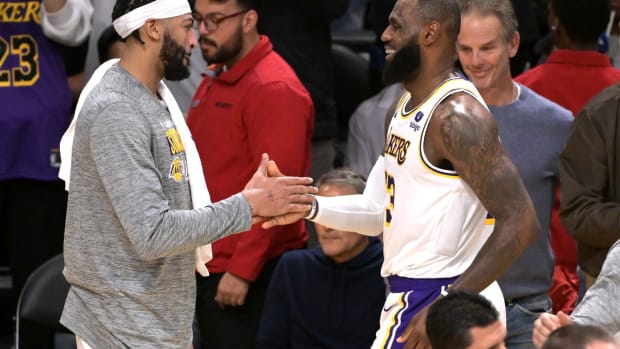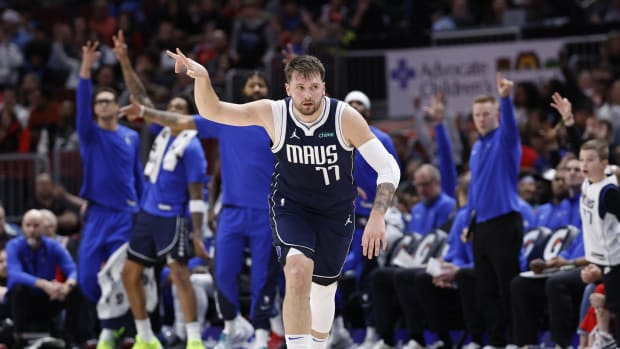Rather Than Separate Their Stars, the Blazers Bet on Their Foundation
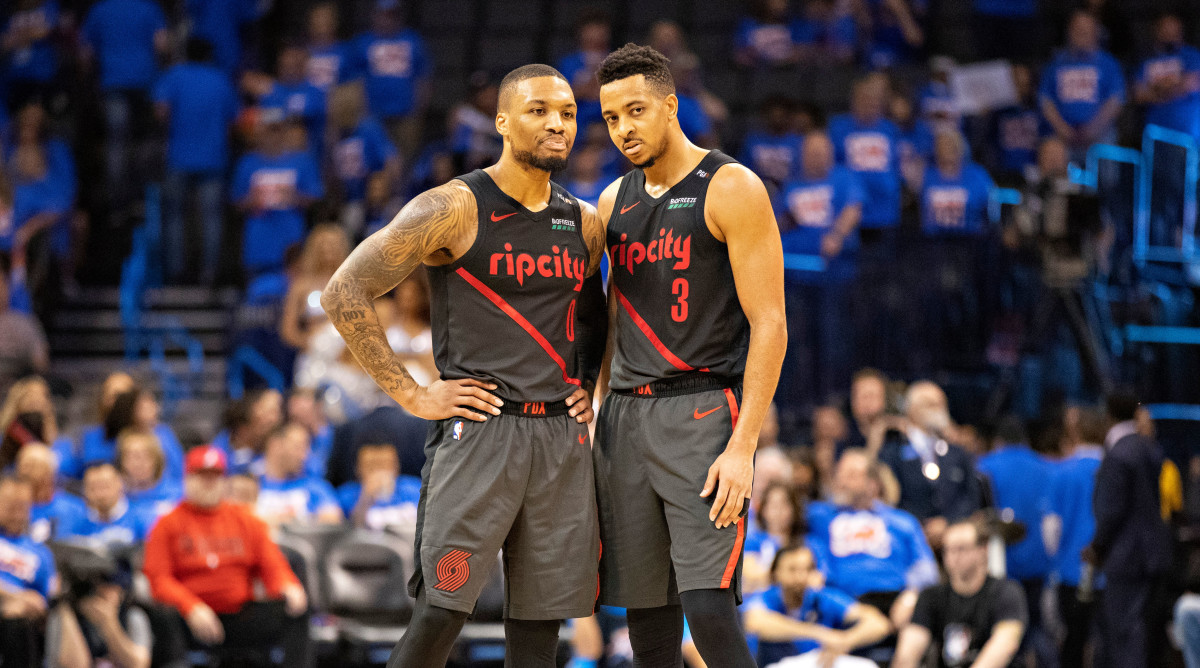
Damian Lillard and CJ McCollum have started alongside one another for four years, long enough for those in the NBA world to conceive of every possible way they could be pried apart. Both are natural scorers, listed at 6'3", and capable of initiating an offense. To some, this will always read as redundancy—reason enough to trade one or the other, and thus to play the parlor game of how such a thing might be possible. Members of other organizations brainstorm possibilities. Media types debate the merits. If one were to mine the data depths of the Trade Machine, they would find a trove of hypothetical moves for either Lillard or McCollum, bringing to Portland some wing or big with less potential for overlap.
Rather than indulge the idea (one that general manager Neil Olshey has dismissed repeatedly), the Blazers opted for a different approach this summer: they kept Lillard and McCollum while changing most everything else. Thirteen players logged at least 500 minutes for Portland last season. Lillard and McCollum are obviously among them. Of the other 11, only two (Zach Collins and Rodney Hood) will play for the Blazers at the start of the 2019-20 season. A team that was competing in the Western Conference finals not two months ago will have to completely rework its rotation, erasing any hope of picking up where they left off.
Whatever Portland turns out to be, it will be fundamentally different from before. Gone are forwards Al-Farouq Aminu and Maurice Harkless, whose defense made the Blazers a better team and whose lack of offense limited what the Blazers could become. Some of their minutes will be filled by Kent Bazemore, whose game is slightly—but perhaps meaningfully—more well-rounded. Jusuf Nurkić—fresh off both the best campaign of his career and a season-ending leg injury—won’t be available to start the season. In his place will be Hassan Whiteside, a bruiser in his own right. Both Bazemore and Whiteside are variations on ideas that are already familiar. Yet there’s no shooter to replace Seth Curry, no playmaker quite like Evan Turner, and no cutter as intuitive as Jake Layman.
Moreover: Portland lost so many of its rotation players that looking at the roster as a series of one-to-one replacements wouldn’t begin to cover it. Both Collins and Hood will have to do more. The buzz around 20-year-old Anfernee Simons is understandable, but also practical; if the Blazers’ underlying goal this summer is to become a more dynamic team, belief in a young creator serves as a means to that end. It’s a compelling thought. We’ve seen years of what Lillard and McCollum can accomplish when surrounded by defenders and specialists. Even if this revised group is no less imperfect, it will at least be imperfect in different ways. Opponents had grown accustomed to Aminu and Harkless. Now they’ll be forced to reckon with a reimagined supporting cast, all while trying to keep Lillard and McCollum under wraps.
If you’re not willing to move Lillard or McCollum—a perfectly reasonable stance, for the record—then at least change the context in which they operate. Most of the problems that Portland encountered in recent years were broader. The offense gummed up on the third action. The defense could get by playing conservatively, but wasn’t versatile enough to adjust as needed. Rather than patch up the roof or replace the plumbing, Portland chose to tear everything they had built down to the foundation. It’s a brave choice, considering the circumstances.
After making a trip to the Western Conference finals, any franchise would be tempted to tinker around the edges and run it all back. Portland was a good enough team, as previously constructed, to gobsmack a Thunder team led by Paul George and Russell Westbrook, and to outlast the Nuggets in a hard-fought seven-game series. They were also swept out of the West finals by a Warriors team without Kevin Durant, and reminded at every turn of how far they still were from actual contention. A magical playoff run isn’t in itself representative of viability in the highest order.
Portland deserves credit for recognizing that, and for going a step further in actually doing something about it. Some of the individual moves the Blazers made may not be all that productive. Whiteside, in particular, was available in part because of all the ways he had frustrated the Heat. Maybe he’ll be a changed, more engaged player with the Blazers. More likely, he’ll be the same finisher, bulk rebounder, and empty-calorie shot-blocker he’s always been. Portland can’t know until it tries, and gave up so little to acquire Whiteside that one can at least see the merit in the concept. Whiteside’s context has changed, too. There are worse ideas than identifying clearly talented (and clearly disappointing) players, putting them around a leader like Lillard, and hoping for the best.
On some level, a franchise owes it to its best players to keep active in this way—even when the alternative is fairly comfortable. Portland could have been a mid-level playoff team for the foreseeable future. It might be still. Yet no one can accuse the Blazers of stagnating after the way they turned over their roster, nor of skimping given that Portland will have the highest payroll in the league this season. There weren’t many obvious avenues for the Blazers to get better this summer. There wasn’t enough cap room for an impact free agent, or enough trade chips to swing a trade for another star. In lieu of all that, Portland inverted the idea of trading one of its star guards, and embraced what chaos it could.
































